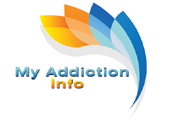Prescription drugs of course have therapeutic benefits. Prescription drugs are often given to patients to treat both physical and mental symptoms, but prescription drug abuse can occur. For example, prescription pain medications are given to patients for everything from dental pain to chronic or ongoing pain. There are drugs such as benzodiazepines used to treat mental health symptoms such as anxiety and panic. There are prescription sleep aids, and also prescription stimulants used to treat symptoms of conditions like ADHD.
While prescription drugs are mostly safe when used as instructed, many of these types of medicines do carry a risk of abuse and addiction.
Prescription drug abuse and addiction can be more difficult to spot until the problem becomes quite significant. For example, there is often a fine line between taking a prescription medication as prescribed and abusing it.
According to the National Institute on Drug Abuse, around 48 million people in the United States aged 12 and older have reportedly used prescription drugs for nonmedical reasons.
Not only do many prescription drugs have the risk of addiction, but they can also lead to severe side effects and overdose deaths. The number of people going to emergency departments because of accidental or intentional overdoses of prescription drugs has gone up exponentially in recent years.
What Are the Most Commonly Abused Prescription Drugs?
Among the types of prescription drugs most commonly abused, opioids are the most pervasive and problematic. Opioids are drugs used to treat pain, ranging from moderate to severe.
In the 1990s doctors were often persuaded by drug companies to prescribe opioids, even for non-severe cases of pain. At the time, many doctors weren’t aware of the addiction potential of these drugs. Unfortunately, by the time it became widely known how dangerous prescription opioids can be, the epidemic was already underway.
Other central nervous system depressants such as benzodiazepines are also commonly abused, as are stimulants.
What Is Prescription Drug Abuse?
Prescription drug abuse isn’t the same as addiction or dependence, however, the three concepts often occur together or one can lead to the other.
Prescription drug abuse refers to any scenario where someone is using a prescription medication outside of a medical professionals’ instructions.
For example, using a loved one or friend’s prescription drug, taking a higher dose than prescribed, or continuing to use it when no longer instructed to by a doctor can all be symptoms of abuse.
If someone uses a prescription drug specifically for desirable effects like relaxation or euphoria, this is abuse as well.
If someone abuses a prescription medication, they’re more likely to become addicted and dependent.
Symptoms of Prescription Drug Abuse
The symptoms of prescription drug abuse can vary depending on the type of substance someone is using.
Symptoms of Prescription Opioid Abuse
Opioids are central nervous system depressants. Initially, they can cause euphoria, and then relaxation or drowsiness. The effects of prescription opioids are similar to heroin because they all affect the same receptor sites in the brain.
Symptoms that indicate someone could be abusing opioids include:
- Drowsiness
- Confusion
- Nodding off
- Euphoria
- Constipation
- Coordination problems
- Developing a tolerance (needing higher doses for the same effect)
- Reduce pain tolerance
- Slow breathing or heart rate
- Changes in mood or behavior
Symptoms of Anxiety Medications and Sedatives
There are a wide variety of prescription anxiety medications and sedatives. Xanax is one example, and it’s categorized as a benzodiazepine. Sleep aids like Lunesta and Ambien are also among the commonly prescribed sedatives. While these drugs can be in different categories, they are all central nervous system depressants.
Symptoms someone is abusing anti-anxiety medications or sedatives can include:
- Drowsiness
- Memory problems
- Slurred speech
- Problems with concentration
- Dizziness
- Slow breathing
- Unsteady walking
Symptoms of Stimulant Abuse
Stimulants can be prescribed to treat ADD and ADHD. Less commonly these drugs might be prescribed to treat narcolepsy and other conditions. Stimulants speed up the processes of the central nervous system. They can create euphoria, but also a rush of energy and increased confidence. Stimulants are often abused by people who want to increase their performance physically, or at school or work.
Symptoms of prescription stimulant abuse can include:
- Alertness
- Sociability
- Energy
- Reduced appetite
- Insomnia
- Weight loss
- Agitation
- Aggression
- Anxiety
- Paranoia
- High blood pressure
- Irregular heartbeat
- Increased body temperature
Prescription drug abuse and addiction can be scary, both for the person with the addiction and their loved ones. Treatment options are available, however. Learn about different prescription drugs of abuse, as well as treatment and recovery tips and resources.

